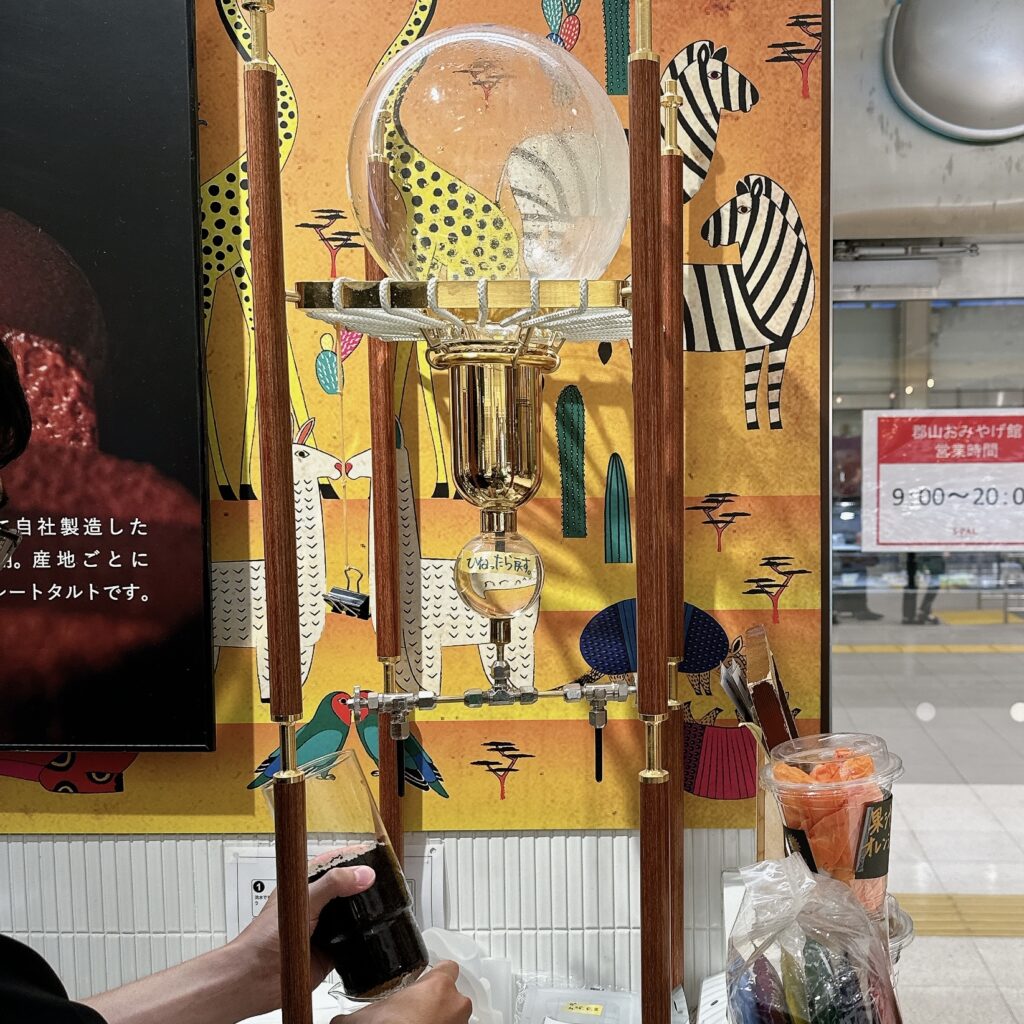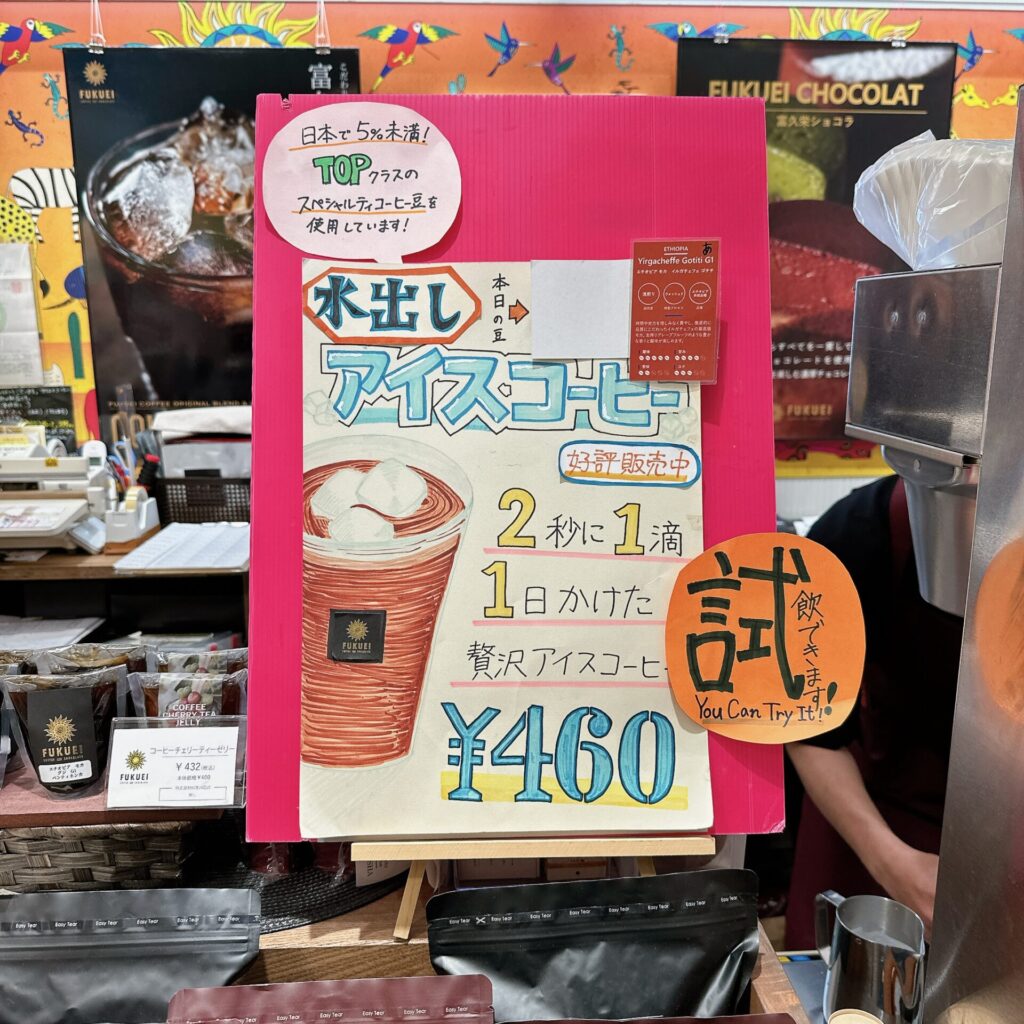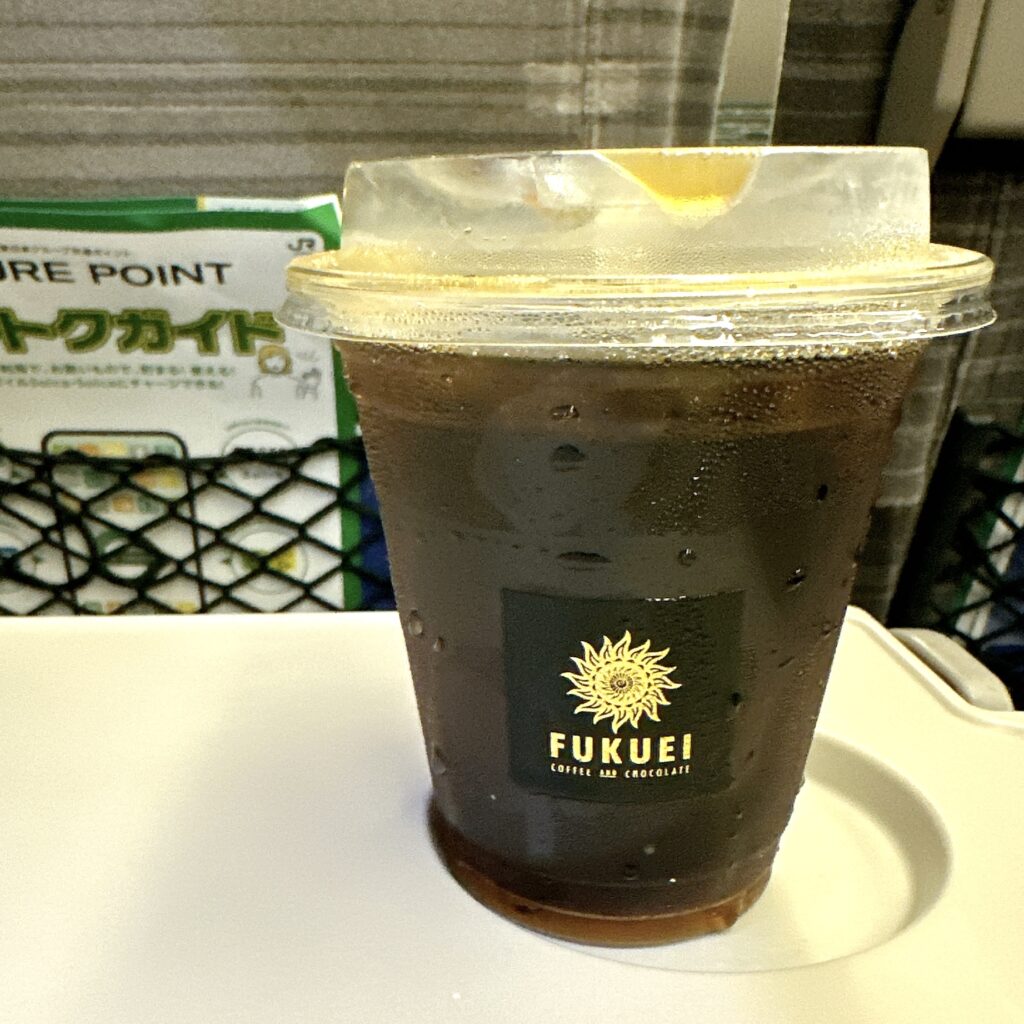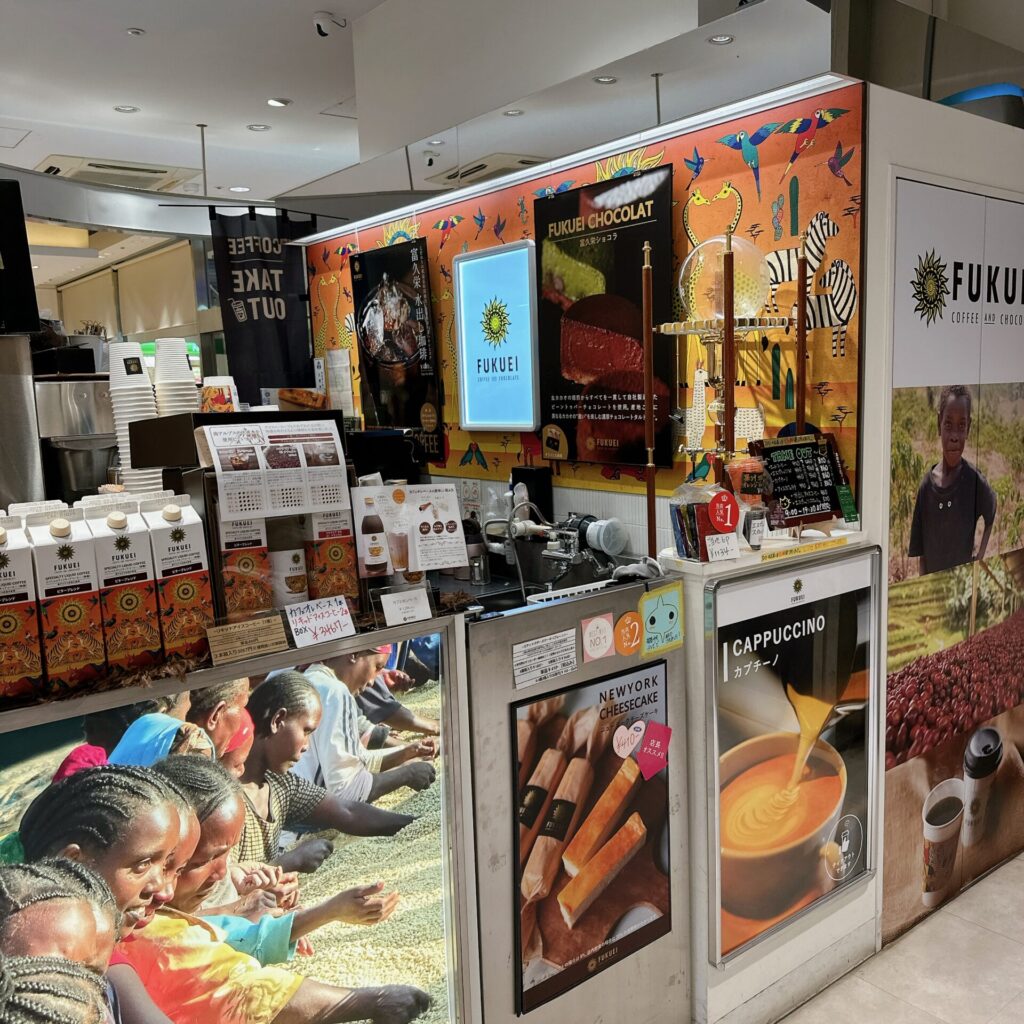After visiting the art museum, enjoying coffee at a local café, savoring regional flavors and sake, and picking up some souvenirs, I was finally ready to head home.
Usually, when I board the Shinkansen, I like to bring a drink—often sake—but this time, having already indulged in some excellent local brews, I was undecided. Wandering around, I suddenly spotted a Dutch-style water dripper on display!
Right across from the Mukoyama Seisakusho Café I had visited earlier was Fukuei Coffee. I decided to grab their Dutch-style brewed Mandheling Special as the perfect companion for my journey home.
A Drops per Two Seconds: A Full Day of Extraction for Luxurious Iced Coffee

The dripper’s mechanism caught my attention first: the upper tank holds water, which drips through the filter at a slow, steady pace. The water passes through the coffee grounds, and the liquid collects drop by drop below.
This brewing process is not only visually beautiful but also results in an exceptional cup of coffee. Dutch-style brewing extracts a coffee’s unique characteristics while softening unpleasant acidity and bitterness, creating a wonderfully aromatic and smooth drink.

The large water tank at the top slowly releases droplets through a filter and coffee grounds, extracting coffee one drop every two seconds.
Mandheling Special: My First Iced Experience

Since it was near closing time, the menu was limited, but I was able to try the Mandheling Special. To cut to the chase—it was excellent.
The bold bitterness was beautifully balanced by a smooth mouthfeel, leaving a roasted, nutty aroma as a pleasant aftertaste. Mandheling beans are known for their minimal acidity and rich depth, and they shone in this brew. Even as the ice melted, the flavor remained intact, offering a consistently enjoyable experience until the very last sip.
The Story Behind Dutch-Style Brewing
The name might suggest Dutch origins, but this brewing method actually started in Indonesia during the early 17th century.
When the Dutch East India Company began cultivating coffee in Indonesia—then a Dutch colony—the locally grown robusta beans were quite different from the lighter, acidic arabica beans popular in Europe. To enjoy these robust, bitter beans, the Dutch devised the water-drip brewing technique, which minimized unpleasant notes while highlighting the beans’ depth and aroma.
By the way...
The Mandheling Arabica beans grown on Indonesia’s Sumatra Island are known for their almost complete lack of acidity and their bold, full-bodied flavor. Often described as having a robust, earthy quality reminiscent of the land itself, these beans offer a deeply satisfying richness.
I’ve tried brewing iced coffee using other Sumatran beans with a hand-drip method before, but the pronounced earthiness often became overwhelming, leading me to feel they might not be well-suited for iced coffee.
However, encountering Mandheling brewed Dutch-style has been a revelation—a refreshing addition to my coffee experiences that I’m truly grateful for.

Slowly sipping it while flipping through art exhibition pamphlets and looking over photos made for a calm, reflective way to end the day.
A Farewell Drink Worth Savoring

Fukuei Coffee is conveniently located on the first floor of the S-PAL building connected to Koriyama Station, right by the entrance to the Omiyagekan. The shop also sells bean-to-bar chocolates, liquid coffee, and specialty roasted beans, making it a great spot for coffee-related souvenirs.
If you’re ever at Koriyama Station, why not treat yourself to the rich flavor of Dutch-style iced coffee?
Fukuei Coffee S-PAL Koriyama
Address: 195 Hiwada, Koriyama City, Fukushima (inside the Koriyama Station Omiyagekan)
Hours: 9:00 AM – 8:00 PM
